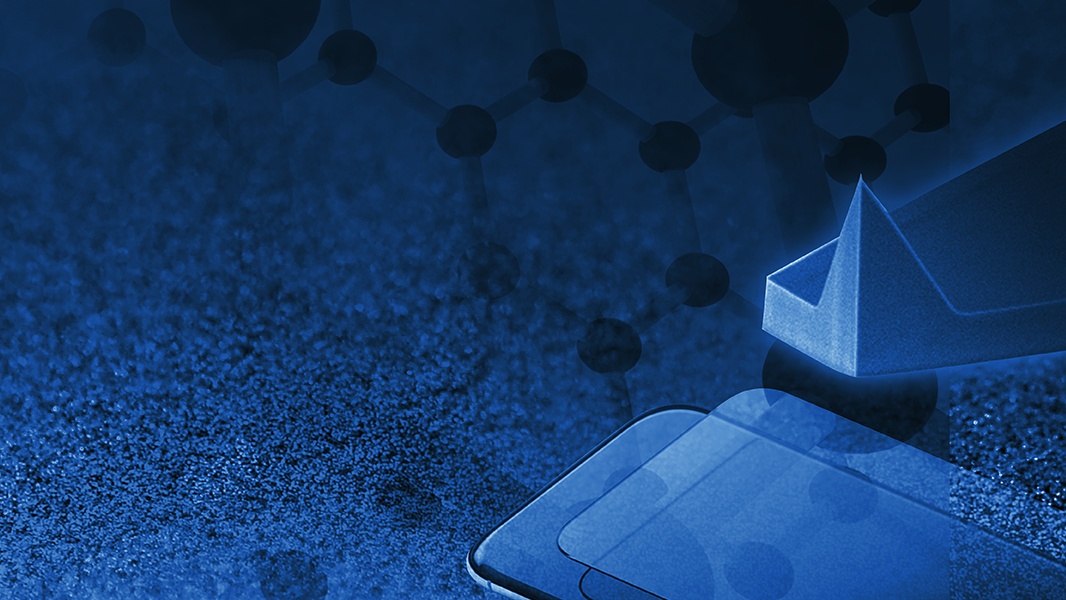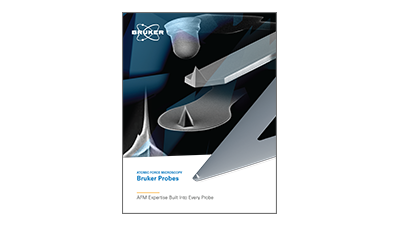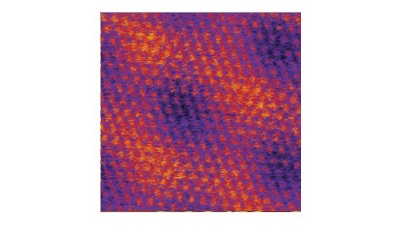

재료 연구용 AFM
도전적인 연구를 위한 고해상도 AFM
첨단 재료 연구 분야의 주요 기법으로써 4세대에 진입하는 원자력 현미경 검사는 고해상도 데이터를 통해 수많은 분야와 응용 분야에 걸쳐 발견에 도움을 주는데 사용되어 왔습니다. Bruker는 1980년대에 최초의 상용 시스템을 도입한 이래 AFM 기능 확장을 주도해 왔습니다. 기술이 발전함에 따라 AFM은 과학자들에게 단순한 표면형상 뿐만 아니라 훨씬 더 복잡한 샘플에서도 물성의 특징을 나타낼 수 있는 기회를 주었습니다. 더 많은 일을 하고, 더 쉽게 할 수 있도록 지원하여 브루커의 AFM은 장비 혁신의 최첨단을 유지하고 있습니다. 예를 들어, 독자적인 기술로 구동되는 PeakForce Tapping® Bruker AFM은 연구원들이 매일 3개의 Peer-reviewed 논문을 출간하기 위한 새로운 나노 기계, 나노 전기 및 나노 전기 화학 연구를 발전시키는 데 도움을 주고 있습니다.
Find the Best Atomic Force Microscope for Your Application
Need help? Contact us to discuss your requirements or see our recommendations for instrument selection.
See how to use upgrades and add-ons to customize a Dimension Icon AFM with extended capabilities.
An atomic force microscope uses a probe to measure tip-sample forces as the tip presses against the sample. The AFM probe is a consumable that consists of a sharp tip on a free-moving cantilever mounted on a chip. One or several cantilevers can be mounted on a comparatively large silicon chip (Figure 1).
The geometry and material of both cantilever and tip can be optimized for a given application, resulting in a large library of probe options.
Most AFM probes are made from silicon or silicon nitride. Silicon probes enable stiffer cantilevers and sharper tips, while silicon nitride probes are more durable and flexible. Bruker’s TappingMode probes are generally made from silicon, and contact mode and ScanAsyst probes are generally made from silicon nitride. There is a considerable amount of functionality and flexibility when modifying these common AFM probe materials with coatings or replacing them with individual molecules of interest. The geometry and material of both cantilever and tip can be optimized for a given application, resulting in a large library of probe options on www.BrukerAFMprobes.com.
The elements of a “good” AFM probe are application-dependent. As such, choosing the right AFM probe relies on balancing parameters of interest including stiffness, spring constant, resonant frequency, and quality factor while considering the needs of your application and the AFM mode used.
Watch our 2023 webinar "The Fundamentals of AFM Probe Selection" to learn about the functional and experimental considerations for selecting a probe, or our 2024 AFM Probes Webinar to hear our AFM experts' recommendations for probe selection.
Bruker is the only major AFM equipment manufacturer that also owns and operates a probes nanofabrication facility, and our broad experience enables us to design and fabricate a wide range of probe types to directly address the evolving needs of AFM users. For more information and to place an order, visit www.BrukerAFMprobes.com.
LEARN MORE:
AFM 모드로 애플리케이션 확장
With an unrivalled — and still growing — suite of available imaging modes, Bruker has an AFM technique for every investigation.
Bruker AFM modes allow researchers to probe their samples’ electrical, magnetic, or materials properties at the nanoscale with unmatched confidence. Bruker’s proprietary PeakForce Tapping technology represents a new core imaging paradigm that provides unprescedented high-resolution imaging, extends AFM measurements into a range of samples not previously accessed, and uniquely enables simultaneous nanoscale property mapping.
This and our other AFM mode advances — such as DataCube, Ringing, ss-PFM, and our new Torsional Resonance Dynamic Friction Microscopy (TR-DFM) modes — are enhancing other correlative and quantitative mapping techniques to enable the development of new modes and deliver new possibilities in an ever-expanding set of topograhical, mechanical, electrical, and chemical applications.
Frequently Asked Questions
An atomic force microscopy (AFM) is a type of scanning probe microscope (SPM). It uses a very sharp probe that is raster-scanned to produce a true 3D topographical map of the surface of a sample with nanoscale resolution.
LEARN MORE:
All types of scanning probe microscopes use a physical probe touching the surface of a sample to scan the surface and collect data. However, their measurement mechanisms are very different — an atomic force microscope uniquely measures the cantilever deflection (bending) caused by forces between the tip and the sample surface. As a result, atomic force microscopes can be used to measure a much wider range of materials than STM.
The basic working principle of an atomic force microscope is:
- A sharp tip at the free end of a cantilever is raster-scanned over a small area of sample.
- As the tip passes over the surface, variations in height cause the cantilever to bend.
- This bending, or change in deflection, is detected through movement of a laser or super luminescent diode (SLD) that is reflected off the cantilever into a position-sensitive photodetector (PSPD).
Throughout this process, piezo actuators operate within an electronic feedback loop to move the tip or sample closer or further away from each other to maintain the relative tip-sample distance and a constant setpoint.
The following table compares methods commonly used to characterize materials at the nanoscale and can be used to understand:
- What is the difference between AFM and SEM?
- What is the difference between AFM and STM?
- What is the difference between AFM and TEM? and
- What is the difference between AFM and confocal microscopy?
Each technique has a great deal of nuance, and values given are approximations. The green marker indicates “definitely yes," the yellow marker indicates “sometimes yes, with additional considerations," and the red marker indicates “definitely no."
| AFM | STM | SEM | TEM | Confocal | |
|---|---|---|---|---|---|
| 3D Imaging | 🟩 | 🟩 | 🟨 | 🟨 | 🟩 |
| Measurements in Vacuum | 🟩 | 🟩 | 🟩 | 🟩 | 🟥 |
| Measurements in Air | 🟩 | 🟥 | 🟥 | 🟥 | 🟩 |
| Measurements in Liquid | 🟩 | 🟥 | 🟥 | 🟥 | 🟩 |
| Label-Free Experiments | 🟩 | 🟩 | 🟩 | 🟩 | 🟥 |
| Appx. Lateral Resolution (nm) | 1 | 0.1 | 1-10 | 0.05-05 | 200 |
| Appx. Vertical Resolution (nm) | 0.1 | 0.1 | N/A | N/A | 500 |
| Sample Requirements/Limitations | Very few limitations |
Limited to conductive samples | Limited to conductive or coated samples | Limited to sample thickness <100 nm | Samples must be tagged |
Investigate Properties in Nanoscale Structures
Atomic force microscopes are used in a wide variety of research and industry applications to collect information about the nanoscale structure and properties of almost any type of sample.
While atomic force microscopy is best known for its ability to resolve surface structure, it provides valuable information about other material properties at the nanoscale. These include mechanical, electrical, electrochemical, piezoelectric, magnetic, thermal, and optical properties. AFM can also be used to manipulate a sample (push, pull, or write) in nanolithography and intra-/inter-molecular (un)binding studies.
With a large variety of measurement types and high degree of sample flexibility, AFM has become a fundamental nano-characterization technique in both academic research and industry for a range of applications, including:
There are very few limitations on what kinds of samples can be analyzed using AFM. AFM has been used to probe the surfaces of crystalline and non-crystalline materials, microelectronic devices, live cells, dental materials, and so much more. For each sample type, sample preparation, experimental design, and probe choice should be considered carefully.
See the documents below for select examples of AFM used for a variety of materials:
- POLYMERS - Measuring Nanoscale Viscoelastic Properties with AFM-Based Nanoscale DMA
- 2D MATERIALS - An Introduction to AFM-Based Scanning Electrochemical Microscopy: PeakForce SECM
- PHOTOVOLTAICS - Simultaneous Electrical and Mechanical Property Mapping at the Nanoscale with PeakForce TUNA
- BATTERY MATERIALS - Performing Hyperspectral Mapping with AFM DataCube Nanoelectrical Modes
- SEMICONDUCTORS - Nanoscale Mapping of Permittivity and Conductivity with Scanning Microwave Impedance Microscopy
- BIOLOGICAL SAMPLES - Imaging of the DNA Double Helix with PeakForce Tapping Mode Atomic Force Microscopy
- THIN FILMS & COATINGS - Surface Characterization of Thin Films & Coatings Symposium [On-Demand Webinar]
응용 프로그램 갤러리
Learn More About Atomic Force Microscopy
Bruker has deep experience and expertise in all things related to atomic force microscopy.
We are eager to share this knowledge with the larger research community. Be sure to explore our extensive offering of resources, below.
If you would like to speak with a Bruker atomic force microscopy expert in person, contact us to discuss your specific application requirements and measurement needs.
Watch Our AFM Webinars
Our webinars cover best practices, introduce new products, provide quick solutions to tricky questions, and offer ideas for new applications, modes, or techniques.
AFM 웨비나 보기
당사의 웨비나는 모범 사례를 다루고, 신제품을 소개하고, 까다로운 질문에 대한 빠른 솔루션을 제공하고, 새로운 애플리케이션, 모드 또는 기술에 대한 아이디어를 제공합니다.
AFM 라이브러리 검색
Browse Atomic Force Microscopy Articles
최신 뉴스 읽기
다가오는 이벤트에서 우리와 함께 연결
어떻게 도와드릴까요?
Bruker는 고객과 협력하여 실제 애플리케이션 이슈를 해결합니다. 당사는 차세대 기술을 개발하고 고객이 적합한 시스템 및 액세서리를 선택할 수 있도록 지원합니다. 이러한 협력은 장비가 판매된 후에도 오랫동안 교육 및 확장 서비스를 통해 계속됩니다.
고도로 훈련된 지원 엔지니어, 애플리케이션 과학자 및 주제 전문가 팀은 시스템 서비스 및 업그레이드뿐만 아니라 애플리케이션 지원 및 교육을 통해 생산성을 극대화하기위해 전적으로 최선을 다하고 있습니다.














